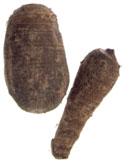This time it's Pizza Hut and the story comes from NOTmilk (website: http://notmilk.com & newsletter: http://health.groups.yahoo.com/group/notmilk/.
Got Pizza Hut? Got Silicone!Once upon a time, it used to be a beautiful day
inthe neighborhood...that no longer applies to theworld of 2006.Good morning,
boys and girls. Can you say:Polydimethylsiloxane?Polydimethylsiloxane is a
substance that is manufactured byDow Chemical and is primarily used in
food-manufacturingfactories as a de-foaming agent for commercial
boilers.Polydimethylsiloxane is not approved for use as a foodadditive, yet,
Pizza Hut is using this silicone-basedchemical as a stabilizer for cheese on its
patentedpizza products. Some of those pizzas go directly to yourchild's schools
and are served at lunchtime.In order to preserve their frozen pizzas, Pizza
Hutclaims that their silicon emulsifier is a necessarypreservative and
emulsifier.Although the package does not list its own secret formula,it does
list "other additives" under the guise of this patent:Patent # 4894245A review
of the United States Patent Office website confirmsthis story that was first
reported on page 5 of the February,2006 issue of Pete Hardin's "Milkweed." The
actual patent:http://tinyurl.com/7d6t8The
following is included in the online patent:"A silicone emulsifier (Dow Corning
FG-10) is mixed with waterto form a 0.05% emulsifier solution. This solution is
sprayedon the frozen cheese granules at a rate of 1.75 parts ofsolution per 100
parts by weight of cheese."Our children are eating silicon in school
cafeterias.Silicon is not an approved substance for human consumption.Neither is
Polydimethylsiloxane, or formaldehyde whichresults as a byproduct when frozen
silicone-sprayed pizzais subjected to heat. Polydimethylsiloxane breaks down
intoformaldehyde when subjected to heat in excess of 150 degreescentigrade.
As guardians for all children, should we continue allowingschool kids to naively
ingest silicone and formaldehyde?How dangerous is formaldehyde? The National
Cancer Institutereports:"Formaldehyde has been classified as a human
carcinogen(cancer-causing substance) by the International Agency forResearch on
Cancer and as a probable human carcinogen by theU.S. Environmental Protection
Agency." Write a letter to your local school board. The healthof our children is in great jeopardy.http://themilkweed.com/Current.htmRobert
Cohenhttp://www.notmilk.com/








